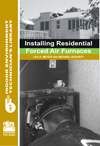
|
| Eric Corey Freed |
Q. You say you design “living, regenerative buildings.” What does that mean?
Well, really, we follow the old model of taking nature, squashing it down, burning it, cutting it and then building a building on it. What we need to do is to not only stop that behavior because it’s not sustainable, truly, but to actually reverse it, fix some of the damage we’ve done. So, imagine a building that doesn’t take a site, clear cut it, cover the whole thing with asphalt and then build a box on it, and then that box is completely inefficient, wastes a lot of energy, wastes a lot of water and is all built with virgin materials. That’s the old paradigm. Imagine if we reversed that, and did a living building, a building that is truly living and that heals the site. So, instead of slash and burn, instead we’re looking at a building that would encourage the site to grow — potentially would grow food, grow energy, clean its own water, reuse its waste, and use heat in the most efficient way possible. Really, we’re looking at making every building a net zero building that produces more energy than it consumes.
Q. How does geothermal HVAC fit into that definition?
First of all, a ground source heat pump system is distributed energy by definition. We’re doing it all on site: There’s no transmission lines needed. It’s also — what I love about it — is that in many senses it’s a very simple technology that’s been around since the birth of humanity. People used to live in caves underground because caves were a greater source of warmth. We’ve used the warmth of the earth, either through thermal mass or just through the core, in some way for centuries. Plus, it does a lot of other things that’ll appeal to a lot of the audience members. It takes us off our hegemony of fossil fuel, which whether you agree or disagree that using fossil fuels is causing a climate issue, pretty much everybody agrees that we have to stop importing oil from foreign sources. Ground source heat pumps are all a method of doing that. It’s essentially a very efficient method of heating and cooling a building, and one that we can no longer ignore. It can’t just be seen on the fringe anymore.
Q. You work mainly in the western part of the U.S. Does geothermal have greater or lesser foothold there versus the rest of the country? Why?
California’s a big state. I would say it varies by what talent’s available. We need more experienced installers everywhere, and if I find one locally, then it certainly makes my job easier. So, it really varies wildly from town to town. In San Francisco, it can be done, but also it depends on the site because we have a lot of bedrock there. In more northern parts of California, it’s easier to do but harder to find talent to do it. So, it really varies from site to site and we evaluate every site individually. But again, the goal is to have every project evaluated automatically for ground source heat pumps.
Q. So, is there a disconnect between where the geothermal contractor talent is, versus where the demand is?
I think it’s been suffering from a chicken-and-egg syndrome for decades. There’s no demand in areas where there’s not talent; where there’s talent, it’s generating demand, but it’s slow.
For example, there’s an old story, and I’m paraphrasing it a bit, but the story goes that two shoe salesmen go to Africa. The first shoe salesmen calls home and says, “You know what? I’m coming home. Nobody here wears shoes.” And the second salesman calls back home and says, “You know what? You better send more salesmen, because nobody here wears shoes.” It really depends on how you look at it. To me, I would love to see us everywhere and anywhere, and I’d love to break out of this chicken-and-egg of, “Well, we’d like to do it, but we can’t find an experienced installer to do it. We can’t find experienced installers because nobody wants to do it here.” I want to break out of that catch-22.
Q. Can you talk about the relative demand for geothermal in commercial, public and residential projects? That is, do you see more demand in one versus another?
The demand varies as much by building type as it does by ownership type. What I mean by that is, if a developer is building either a commercial building or a residential building, you’re going to see less of it because it just has a higher upfront cost, but a better payback. And developers, as I’ve said, are not interested in return on investment for payback. If it’s an owner-occupied building, whether it’s their office building or if it’s their house, you’re going to see a higher incidence of using geothermal. It’s just the way it goes. But I also think that the benefits of geothermal are generally going to be seen among residential first — they tend to be the early adopters for any system, even though this system’s been around a long time. And also because of the comfort level it provides. I think, just for those basic reasons, we’ve seen a higher adoption among residential. It’s also easier to make the argument to a residential client than it is to a commercial client.
On the other hand, commercial is the building type that needs to change. If you figure that our energy use really is about 70 percent commercial, 30 percent to residential, then commercial is what really needs to change. And what really, really needs to change are existing buildings. I’d love to see more push for retrofitting systems into existing buildings. I know that’s a little harder with geothermal, but it can be done.
Q. Can you describe the demand you see for retrofits? Or do you just work in new construction?
Retrofits are only going to grow. For instance, right now I think there are 16 states — the number changes all the time — but there are 16 states across the nation that require some form of energy benchmarking and disclosure, California being one of them. They all have differing variations on this law. In California, for example, you can’t sell a building without disclosing its energy use. Eventually what’s going to happen is you’re not going to be able to sell a building unless that building meets minimum standards. Certain states, like New Jersey, have smog emissions standards. If your car doesn’t pass the smog emissions, you can’t sell the car until it’s fixed. We’re going to eventually see the same thing with buildings. If your building doesn’t meet a minimum energy standard, you won’t be able to sell the building until it’s fixed. It’s just going to be the way it has to be. Whether you like that type of government interference in commerce or not, it doesn’t matter, because this is what needs to be done.
There are a lot of buildings that never undergo a remodel, any type of renovation. They’re never touched by the permit process. So, in other words, not only are the bulk of the buildings out there existing buildings, but most of those buildings will never have the opportunity to be retrofit unless we really, strongly encourage the owners to do that. The only time we can do that is at the point of sale.
If you’ve got a big commercial office building from the ’70s, it’s got a typical HVAC system that wastes a lot of energy. All that air is leaking out and all of it’s sourced originally from some sort of fossil-fuel based electricity or fossil-fuel based natural gas, you’re probably looking at a building that’s incredibly wasteful, has a very low Energy Star rating, very low EUI (energy use intensity) and, as a result, when are we going to get the opportunity to upgrade it? It’s at the point of sale, where we can require you to disclose the energy use and upgrade it at that point. Suddenly, we can transform most of our building infrastructure within 10 years.
That being said, there’s still going to be hundreds of thousands of properties that will be never be sold, will never be touched by a permit, and will never be upgraded. Because of that, you’re going to see a lot of other types of incentive programs, such as utility rebates. For example, you’ve seen where, locally, your utility might offer you a rebate if you put in a geothermal system or a high efficiency system. Those types of rebates are crucial to getting all those other buildings that never get touched by any point of sale or permitting process. Most geothermal systems have a 30 percent federal tax credit, just like solar and wind do. Obviously, I’d like to see those rebates just increase, because they’ll speed up and accelerate the transition.
Remember, our goal is to make every building a super-energy-efficient building.
Q. So there’s still a strong role for the government to play in helping geothermal grow?
There’s no one path that gets us there. We can’t rely solely on geothermal and solar as educating the client. We can’t rely solely on utilities providing rebates. And we can’t rely solely on the government providing laws to incentivize people to do it. In truth, we need all three of those things moving forward at a rapid pace, and we need them now.
Q. What advice would you have for contractors in geothermal?
Start sharing your successes. Take the last five projects that you did, ones you’re happy with, and create a project sheet. Send this out to local architects and builders. Include a photograph, details of the project and other pertinent facts. And, if it’s a retrofit, especially, mention the before and after in terms of impact of energy use — the monthly cost. That’s your biggest strength; it’s the payback, right? So you could easily do a back-of-envelope type calculation for each project. Use each project as a case study. Do it on a simple one sheet, create a template so you can do it for all your projects, and send it out. And then, after you build up this list of architects and builders and developers that are in your area, then every six months you can send them a new batch of success stories that you’ve done. That’s one tip. Remember, stop being apologetic about what we’re doing, because we have the better system on our side.
One other bit of advice would be to talk about your systems and how they would potentially benefit the project in terms of LEED (Leadership in Energy and Environmental Design) credits for the LEED green building rating system. Tell them how the use of geothermal would affect these points. Know those points ahead of time. Put them on your website, and advertise: The use of our system helps you obtain those credits, and those are valuable.
One way to educate your local architects and builders is to hold lunch and learns. You can either do them individually at their offices or stage a local one and invite them from all over to come if you want to do a bigger one. It’s usually easier to get them in their office.
Another tip is to get local specification writers, send them a prewritten spec for your geothermal system and say, “Here, you should be specifying geothermal systems. You can be suggesting them to your clients. I’ve already taken the liberty of prewriting it for you. …”
By prewriting the specification for the spec writer, you’re removing any excuse that he has for why he would say no. By providing a lunch and learn, you’re removing any excuse of why they would say no, and not listen to you. And by talking about design … you’re just removing the “nos.” That’s really the goal.
Sidebar: IGSHPA Keynote
Eric Corey Freed is scheduled to speak at 9 a.m., Wednesday, Oct. 9, at the IGSHPA Technical Conference and Expo in Las Vegas. For more on Freed, visit www.organicarchitect.com.
Publication date: 9/23/2013
Want more HVAC industry news and information? Join The NEWS on Facebook, Twitter, and LinkedIn today!










